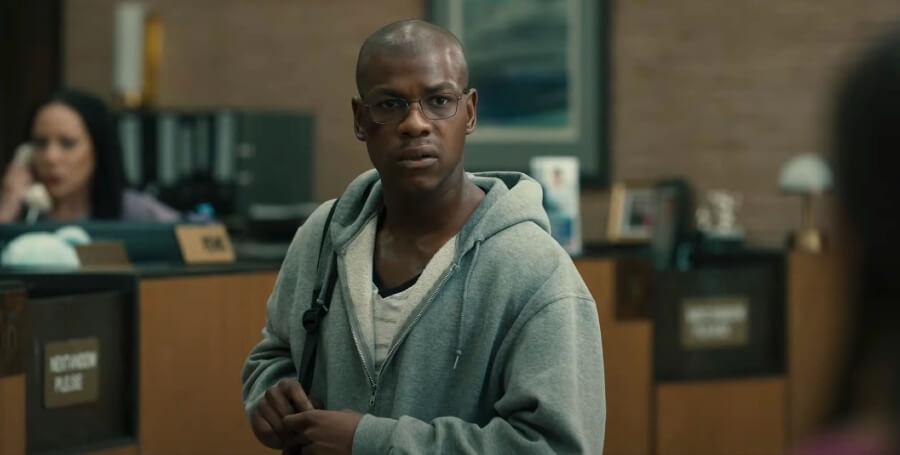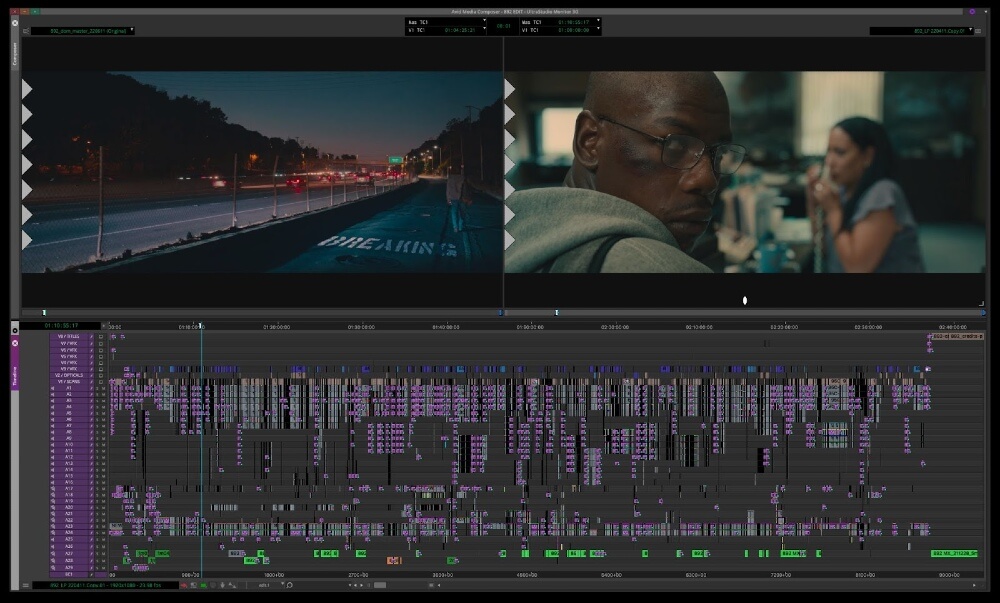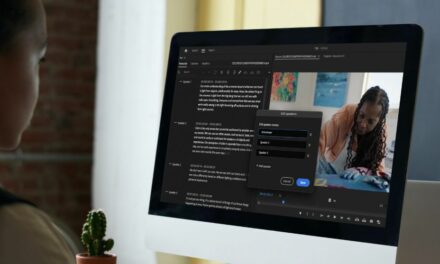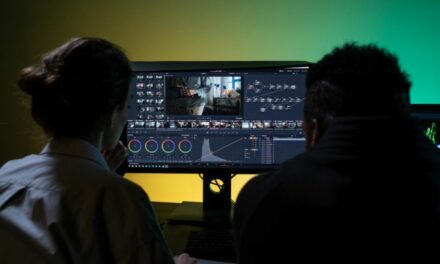It seems like every year you can find a movie that claims “based on true events” and you watch it, and the similarities end with the characters sharing the same name. Breaking starring John Boyega is not one of those fake true stories.
Chris Witt was the editor for Breaking and part of what he brought to the film was a deep and eclectic toolbelt. He has over five dozen film credits and has worked on several acclaimed foreign language films, including Oscar-nominated Kavi (2010 Best Live Action Short) and Hindi feature Gali Guleiyan (AACTA-nominated for 2018 best Asian film). Many (or all) of Chris’s films attempt to explore universal, shared elements of humanity. A focal aspect of what sets Breaking apart from other dramatic films is the closeness of it, a story that occurred in real-life just five years ago and its dramatic weight still reverberates now.
Breaking has already won the Sundance U.S. Dramatic Special Jury Award: Ensemble Cast and will release theatrically on August 26th. Chris spoke with us about drawing from real-world audio and testimony for a film like Breaking, working with director Abi Damaris Corbin and Michael K. Williams, and the creative reward of finding undiscovered moments in that last perfect take. Here’s what Chris had to say:
Breaking is based on the true story of Brian Brown-Easley, a marine veteran who took extreme measures when a conflict with the VA system left him frustrated and desperate. Do you have a different mindset when editing a true story versus a piece of fiction – scenes you want to make sure you keep in, or cuts that ensure continuity and accuracy?
“When I joined the movie originally titled “892”, one of the first things the director Abi Damaris Corbin and I discussed was the importance of telling an honest story (from all sides of the real-life situation). Abi spent time talking with the real-life counterparts of our characters from the negotiator to Brian’s ex-wife, and we also had all the real-life audio recordings from that day and the investigation that followed.
Initially, I wanted to protect my first impression and objectivity to the material, but eventually I started listening to those audio recordings. I’ve cut “based on true events” before, but this was the first time that hearing how an actor, in this case, John Boyega, portrayed a real-life character, blew me away. Hearing the real-life Brian on the 911 call, I couldn’t distinguish the two. Boyega truly captured Brian. And a lot of the dialogue very closely resembles the 911 transcript.
We knew Brian’s ex-wife and daughter would eventually see this movie as will members of the law enforcement agencies that were involved, so we were very careful to honor them all with our portrayal by not straying from what is known about that situation simply for the sake of heightening the entertainment value.”
I don’t want to spoil the story for anyone unfamiliar (read more about it here), so I’ll use the terms “powerful” and “tension-wrought” to describe the situation that John Boyega anchors in Breaking. Are there any methods or rules you like to follow that you’d be willing to share about how to foster a sense of fraught tension for a crime-thriller film like this?
“After watching our initial rough cut, our Producer Kevin Turen commented that the movie felt uniquely “real-time”. I think when you’re editing, you don’t want the movie to feel like raw footage unless you’re doing a found footage genre. But I think what Kevin was getting at is that if you get pulled into our movie, you start to experience the story as if you were there— in real time. There’s something very intentional that I did in my rhythms and pacing to lean into that concept.
Depending on the character’s point-of-view you’re tracking, you can tap into the emotion of that character by aligning your pace and rhythm essentially to their psychological experience. For example, when Brian first enters the bank and approaches the teller, the pace is slow— you can feel with Brian his sweat slowly sliding down his face hoping no one will notice. You can feel something coming. You sense Brian’s anxiety to cross a line he can’t uncross and you sync up to that because the way you’re experiencing the edit is aligned with that.
Shortly after taking the hostages, he starts to panic, fearing that he’s in the crosshairs of a sniper. The edit starts to pulse with his quickening heart, and as he frantically runs around the room yanking out the cables to the security cameras, the edit frenetically keeps up with him, transferring his fear and panic through the pace and rhythm to our shared experience.
Through a different POV, there’s a moment when Estel Valerie, by connecting over family, is trying to manipulate Brian to let them go. She becomes aware that this dangerous man is picking up on her strategy. I allow the audience to viscerally feel her dread through how I linger on Brian’s face before he answers—slightly out of the established rhythm. Like in real life, that anticipation of his next words make Estel’s heart skip a beat, and my hope is that if you’re captivated by the story at this point, you’ll also find your heart in your throat as you await his next words.”

Deadline magazine name-dropped you specifically in their review of Breaking after Sundance, saying “Corbin is firmly in control behind the camera and with particular expert help with her editor Chris Witt”. What was your work process like with Abi Damaris Corbin’s footage, and what do you feel is necessary on your end to successfully achieve a director’s vision for a film?
“I think this goes both ways. They could have wrote, “Witt is firmly in control of the edit with the brilliant taste and leadership from his director Abi Corbin!” What I love in a rewarding creative partnership is how both the director and editor sharpen each other and in turn sharpen the edit. What is key is sharing the same aesthetic taste that fosters a sense of trust and freedom to make bold choices and experiment with ideas.
One of the brilliant aspects of Abi’s taste is knowing when she has the performance in the can or when to keep going for more takes. I think some directors and especially producers and ADs resist going past take four, but some moments needed more discovery and Abi trusted her instincts. Some of our very best memorable moments were on take seven of seven. Watching the footage, I would see the performance strengthen, and then around take seven there’d be this magic pop in the performance. She then sensed she had the goods and would move on.
It was similar in the edit. Sometimes we would know on a gut level that there was something to further hone in a scene or sequence. We’d keep pushing. When you’re in the edit chair, it can be tempting to give into creative fatigue and feel that it’s as good as it can be (considering what we have to work with yada yada). I give a lot of credit to Abi for recognizing where we could dig deeper and encouraging us both to go the distance. She would say “we can do better” and she was usually right, even if we didn’t find the “better” right away. When we would eventually break through, it was always like, “Why didn’t we think of this earlier!?”
It’s important for me in the edit chair to facilitate flexibility. If you religiously keep an organized system of tracking edits, and you maintain an open mind and positive attitude, you will absolutely find something through your labors that will make the cut better. The end of those days when something unexpected is discovered is always the highlight of my time with any director.”
When and where can people watch Breaking? Is it streaming or in theaters?
“Breaking will premiere in theaters across the US on August 26th. Streaming will start a month after that!”
Thanks so much for your time, Chris.
This article is the first part of the 2-part series – read the second part here!




